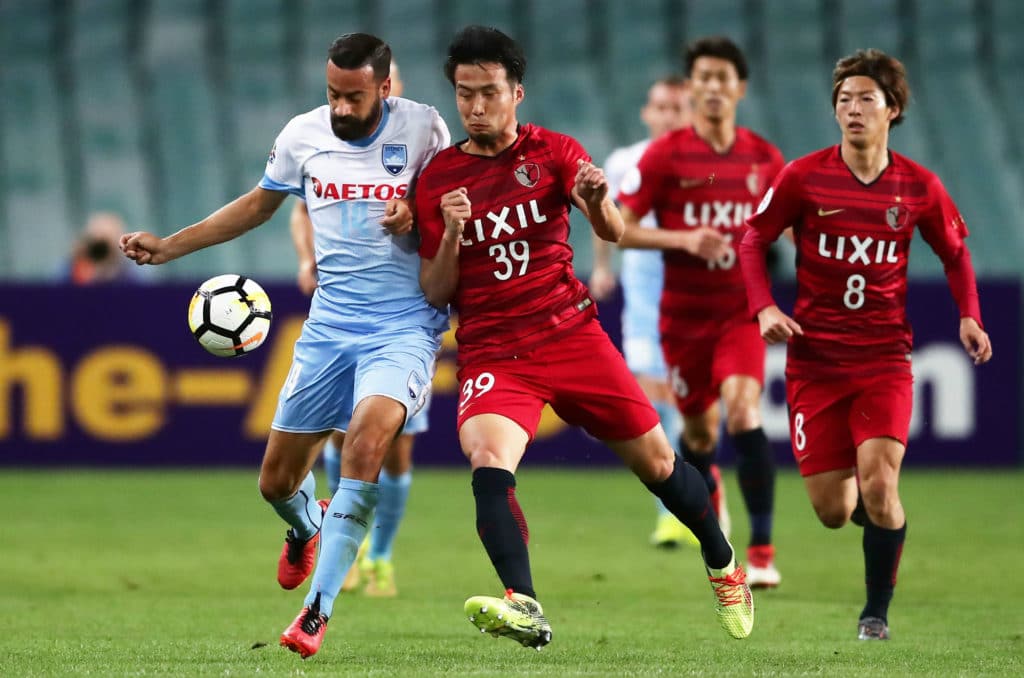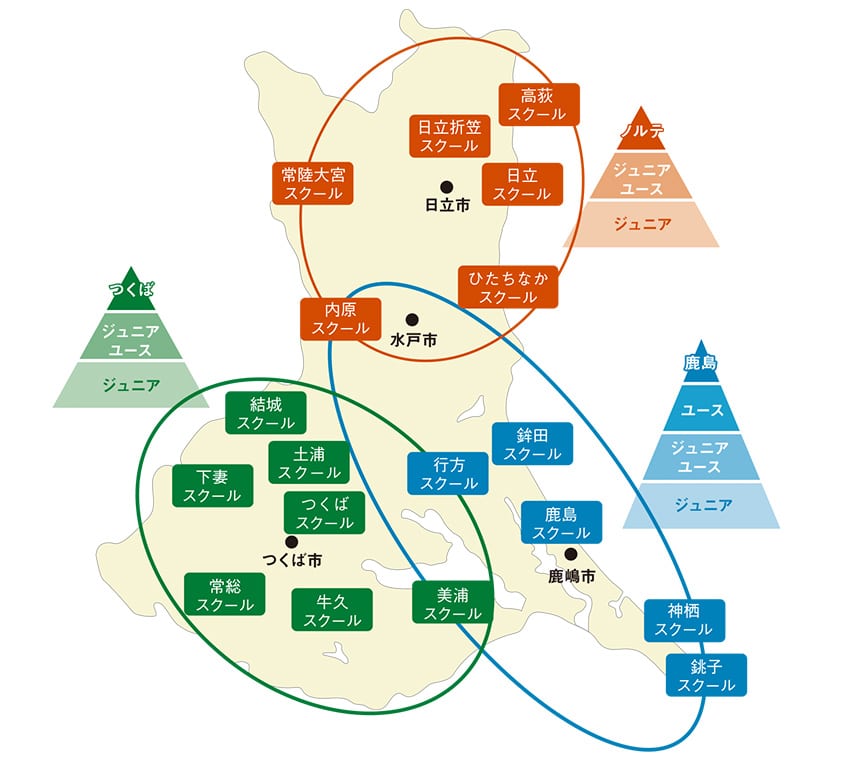Kashima Antlers Tryouts
Kashima Antlers (鹿島アントラーズ, Kashima Antorāzu) are a Japanese professional football club based in Kashima, Ibaraki, part of the Greater Tokyo Area. The club plays in the J1 League, which is the top tier of football in the country.
Kashima Antlers Youth Development System
Academy
The Antlers training organization aims to be a familiar J-League training organization rooted in the community, and is active with three core branches: Kashima, Norte (Hitachi), and Tsukuba. The categories are divided into five categories: school, school special course, school strengthening course, junior (Kashima, Tsukuba), junior youth (Kashima, Norte, Tsukuba), and youth (Kashima). And under a consistent guidance system that makes the most of our sensibilities, we would like to nurture as many wonderful athletes as possible. In addition, since 2009, we have been working to develop players who can play an active role in the top team, such as by further enhancing the Antlers Academy training activities.
Furthermore, in order to establish a “community-based player training system” that trains players from all over Ibaraki Prefecture, we are currently developing schools at 17 schools in the prefecture and Choshi in Chiba prefecture, for a total of 18 schools.
In recent years, Mitsuo Ogasawara, a technical advisor, has been actively hiring coaching staff for club OBs, and we are focusing on inheriting the Antlers style.
Expanding the circle of the Antlers family through soccer is the guiding principle of the Antlers training organization.
Academy Overview
- [1] The fun of soccer in the encounter and play with the ball and friends Guidance.
- [2] Acquisition of basic skills and tactics
- [3] Registration and matches will be done by each team.
4 types | Junior / 4th, 5th, 6th grade
- [1] Acquisition of perfect skills (ball control without feeling stress)
- [2] Acquisition of basic skills, tactics, and improvement of game sense
- [3] Participation in various competitions
3 types | Junior Youth / Under 15 years old
- [1] Repetition of technology, development from individual to group tactics
- [2] Participation in club youth (U-15) tournaments, etc.
- [3] Participation in each league match
- [4] Antlers Academy Tresen Implementation of activities
2 types | Youth / Under 18 years old
- [1] Training to top players
- [2] Participation in club youth (U-18) tournaments, etc.
- [3] Participation in league games
Practice Time and Place
Practice will be conducted on a predetermined day and time. At the end of each month, we will give you a schedule for the following month, so please check it. Also, please check the annual schedule for schools.
Practice time
As a general rule, on weekdays, 18: 00-20: 00 (junior / junior youth), 15: 00-18: 00 (youth)
School is basic, 16: 20-17: 10, 17: 25-18: 25, 18 : 40-19: 40
- For Saturdays, Sundays, and public holidays, please refer to the schedule (excluding schools).
Practice place
As a general rule, Antlers ground and each school venue. Training facilities include Antlers Ground (3 natural turf, 2 artificial turf), Nippon Steel & Sumitomo Metal General Ground (1 artificial turf), Multipurpose Ground (1 natural turf), Tsukuba Academy Center, Hitachi Research Institute Ground, etc.
Kashima Antlers Academy Recruitment
At the time of this writing, there is no official recruitment / trial information for Kashima Antlers Academy. Please come back at a later date while we monitor this club.
EXPLORE MORE CLUBS!
Explore more professional clubs by continent.
History
The city of Kashima, from which the band takes its name, is also known as “Deer Island,” hence the origin of the term “Antlers.” In addition to looking like deer antlers, the club crest is reminiscent of a rose thorn, which is significant because the rose thorn is the prefecture flower of Ibaraki, which is also the club’s home prefecture.
Some world religions see deer, which are generally considered to be friendly creatures, in the role of spiritual messengers. In point of fact, Kashima Shrine, which is one of the most well-known shrines in Japan and is situated in close proximity to the club’s headquarters, has been raising deer as a spiritual symbol for over 1,300 years and has kept and cared for deer throughout that time.
Deer are known for their kind nature, but they also have a reputation for being courageous because of the way they fight one other with their potentially lethal antlers. In 1947, the club was established in Osaka as the Sumitomo Metal Industries Factory Football Club. In 1975, the club relocated to Kashima, Ibaraki. It competed in the Japan Soccer League, which is a league for semi-professional soccer teams (JSL).
They were promoted to the top division of the JSL in 1984, but they were never able to make much of an impact. They were relegated in 1985/1986, returned in 1986/1987, and were relegated once again in 1988/1989. Its best finish in the JSL came in the 1991–1992 season, when it finished second in the Second Division.

Following the establishment of the fully professional J.League, Sumitomo, along with the other clubs, dropped the corporate brand from the club’s name and reorganized themselves as the Kashima Antlers. Due to the fact that many clubs in the JSL First Division elected to relegate themselves rather than attempt to compete at the professional level, Kashima was effectively elevated to the new top flight. (Of the initial 10 clubs who were founding members of the J.League, Kashima and Shimizu S-Pulse were recently elevated to the top division.
Ironically, Kashima had earned its place in the JSL Second Division back in 1974 by winning a match against Nippon Light Metal/Hagoromo Club, which was the predecessor of Shimizu. Kashima have been one of the most dominant clubs in Japan since since the J.League and the beginning of professional football in Japan in 1993. They currently have a number of illustrious distinctions and records. Kashima were the first club to win a J.League stage, claiming the 1st stage of the inaugural season in 1993.
During the club’s formative years, former Brazilian star and current coach of the Japanese national team Zico was the driving force behind the club’s success. This established a foundation for continued greatness, and in the year 2000, long after the Kashima icon had left the club, Kashima became the first club in the J.League to achieve the “treble” by simultaneously capturing all three of the league’s major titles: the J.League, the J.League Cup, and the Emperor’s Cup. This was a historic accomplishment.
They became the first and only team in Japan to have won 10 domestic titles in the professional era by claiming the J.League championship in 2007. This accomplishment was accomplished relatively recently. They were able to successfully defend their J. League title for the second time in 2008, making them the first and only team to accomplish this feat. They achieved this unprecedented feat in 2009, becoming the first and only club in J.League history to do so. In 2011, 2012, and most recently followed by their victory in 2015, Kashima extended their unmatched record of major domestic titles in the professional era to seventeen.
These victories in back-to-back J.League Cups occurred in 2011, 2012, and most recently followed by their victory in 2015. Because of Zico’s previous involvement with the club, Kashima continues to have close relationships with the Brazilian football community even to this day. This is a direct result of Zico’s time spent working for the team. Only three non-Brazilian foreign players and mostly Brazilian coaches have signed for Kashima since the beginning of the J.League. This is due to the fact that Kashima has a connection to Brazil, which has reflected itself in both the club’s player transfer and coaching policy.
Itako, Kamisu, Namegata, and Hokota, which are all located in Ibaraki Prefecture, have also been recognized as the club’s official hometowns. This is due to the fact that the population of Kashima city is only 60,000 people, and because of this, the club has also adopted the cities as its official hometowns. The total population of the five cities is 280 thousand people. Kashima Soccer Stadium, which was one of the venues for the 2002 FIFA World Cup and has a capacity of 40,000, is where the Kashima Antlers play their home games.
After defeating the South American champions Atlético Nacional by a score of 3-0 in 2016, they made history by becoming the first Asian club to go to the final of the FIFA Club World Cup. In the championship game, they were defeated by European champion Real Madrid 4–2 in extra time after playing to a 2–2 draw with them through the first 90 minutes.








